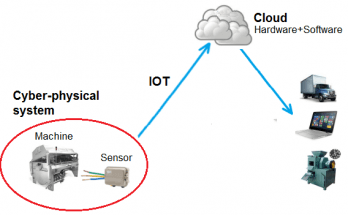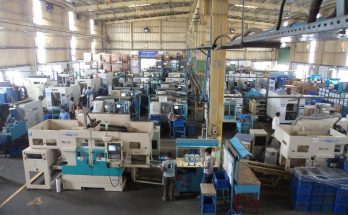In most shop floors, idle time on machines can be up to 40 %, and people think this is normal.
Basically, these firms have bought a bunch of elephants to do their work, and the elephants are sleeping 40 % of the time. The problem is that even when they’re sleeping, the elephants have to be fed and their mahouts have to be paid their salaries.

What does this mean in terms of production and profitability?
1. Your ROI is straightaway reduced by 30 %.
2. You are maybe producing 70 parts per shift when you could be producing 100.
3. You have bought 10 machines when 7 would have been enough.
4. Your prices are 30 % more, in the cut-throat market out there.
Some causes of idle time
Low hanging fruit (can be fixed very quickly)
Work ethics problems Operator coming late at beginning of shift, taking more time than allotted for tea, lunch, dinner, etc. This can easily add up to 1 hour per shift, or 16 % of the available time, or Rs. 16,000 per month per CNC lathe.
Long time to attend When there technical clarification or a machine breakdown, the operator goes in search of the supervisor or maintenance person to report the issue. The latter come when they are free, 10 or 15 minutes later.
High hanging fruit (can be fixed in the medium term)
System problems
CNC setup time reduction can also give you big gains in profitability. Searching for things is another area. E.g., in a shop with VMCs where our LEANworks industry 4.0 based machine monitoring system is being used, the reports showed operators spent up to 15 minutes every shift ‘searching for tools’. It turned out that each bay had one set of Allen keys, and when an operator required a key he went around all machines searching for it. If the keys were already in use on a machine, he had to wait till they were free. That’s a loss 3 % of the available time, or Rs. 6000 per VMC per month. The (simple) solution ? The firm just gave each operator a set of Allen keys costing Rs. 200, and earned 360 times that amount in a year.
Breakdowns Breakdowns due to avoidable reasons, which can be fixed by simple and cheap preventive maintenance.
The problem is that there are a hundred different causes of idle time, and you have no idea of them unless you are standing on the shop floor all the time. The problem worsens as the number of machines in the plant increases. Numerous such small leakages add up to a big chunk of idle time every shift, and NOBODY notices. These become accepted practice, part of the system, absorbed into the culture of the shop, and everybody just says “Oh, that’s how we work here.”
Act now ! Put in a machine monitoring system system track idle times and eliminate them. You will see your profits shoot up, and your investment on new machines drop.
LEANworks machine monitoring software is one such system that tracks machines in your shop floor 24/7 electronically, remotely. It works on Industry 4.0 design principles. Sitting at your desktop, from home, or wherever you are in the world, you can get reports on production quantity, idle times, part quality, OEE, rework, breakdowns, and other key statistics. You can get alerts on your mobile phone on any abnormal situations – production below target, rejections above limit, etc.
In the shop with the Allen key issue mentioned above, the idle time was 28 %, and they reduced it by half in the first month of installing LEANworks. The system also speeds up your Lean and TPM implementation, and OEE improvement.
Want to know more about how LEANworx can help you discover hidden profits ? Click here.
Etc Fungus as food
I never knew humans ate lichen till I saw this footpath shop in City Market, Bangalore. Like most of us who’ve seen it before, I used to dismiss it as some fungus that grows on trees and rocks. I asked the woman who owned the shop what it was used for, and she said people put it in Pulao.

On the internet I found that it is used as a spice in Chettinad, Hyderabadi and Maharashtrian cuisine. It’s used in Garam masala and in Pulao – called Dagad phool in Hindi and Marathi, Kallupachi in Telugu, Kalpasi in Tamil.

Reindeer eating lichen
Lichen grows virtually anywhere, including in some of the most extreme environments on Earth – arctic tundra, hot deserts, rocky coasts, and toxic slag heaps. It is one of the few things that grows in the Arctic, and Reindeer in the Arctic feed on lichen that is a close cousin of the one that I saw in City Market.


